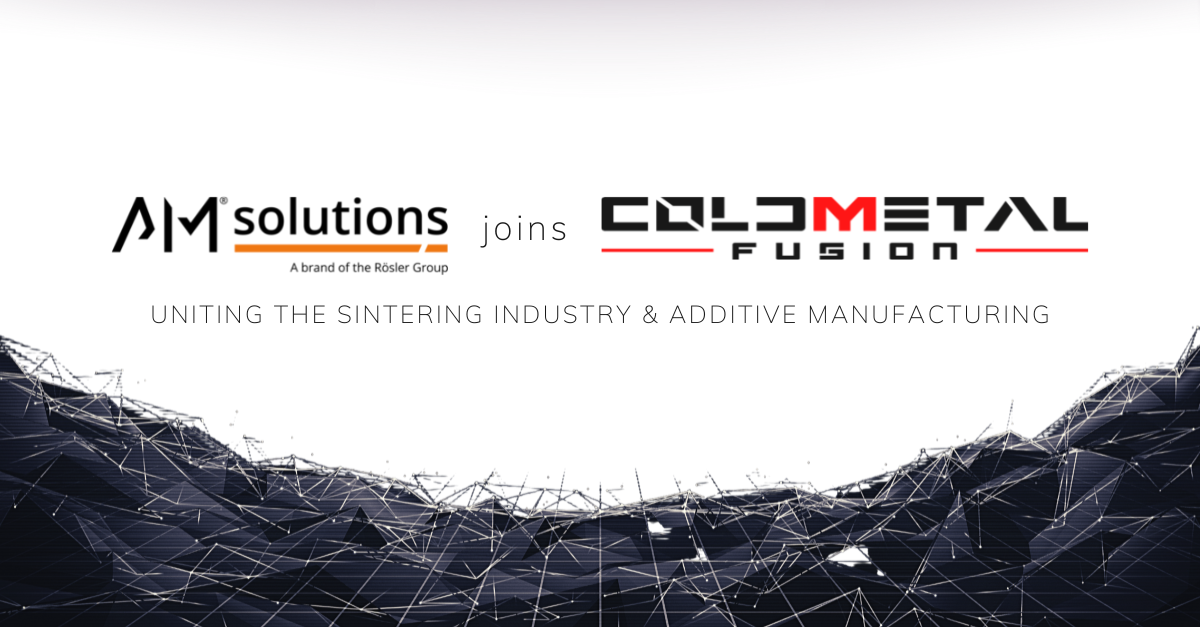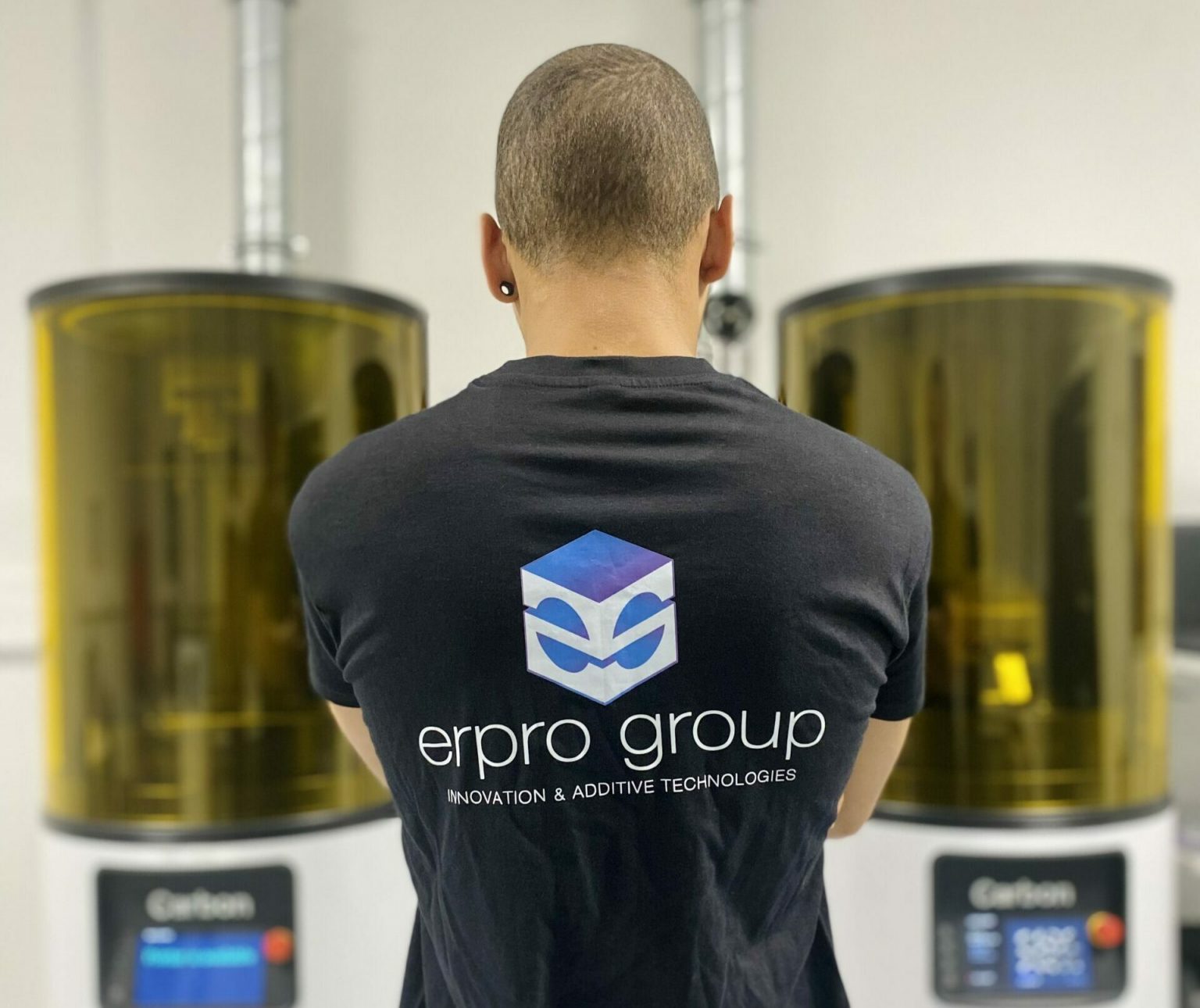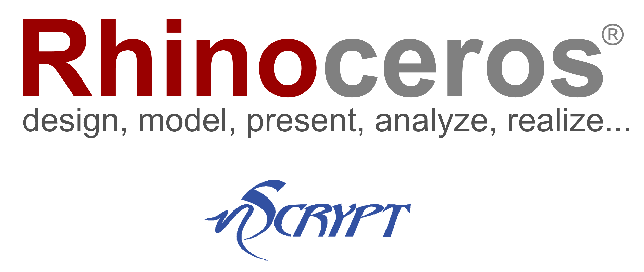In today’s 3D Printing News Briefs, AM Solutions has joined the ColdMetalFusion Alliance, AMFG is partnering with French 3D printing service bureau Erpro Group, and AddUp and the WBA are partnering to create a 3D printing platform dedicated to tooling. Nexa3D selected Mechnano’s MechT for 3D printing static-dissipative parts, and nScrypt has integrated Rhino 3D CAD. Finally, Osaka University researchers are 3D printing embedded codes inside cookies.
AM Solutions Joins ColdMetalFusion Alliance
Rösler Group 3D post-processing brand AM Solutions has joined the ColdMetalFusion Alliance to unite the AM and sintering industries around more robust manufacturing standards. The consortium’s vision is to industrialize sintering and AM by introducing common standards, and members offer equipment, services, software, material, and their own expertise to customers in the metal manufacturing industry, as well as sharing a common culture and way of thinking. AM Solutions is working to make 3D printing post-processing stronger and more reliable, and its membership in the Alliance will help accelerate the consortium’s vision. It’s already starting to develop its offering with consortium partners to help them achieve optimal powder removal and cleaning of 3D printed green parts.
“Through the use of its broad portfolio of finishing and post-processing technologies, AM Solutions – 3D post processing technology will offer complete end-to-end support across the key process phases of ColdMetalFusion, and thus become a key enabler for digital manufacturing beyond the 1-million parts threshold,” said Stephan Rösler, CEO of the Rösler Group. “Our products not only guarantee significant productivity increases and cost savings, but they also provide the stability and process-robustness required for industrial manufacturing. We are industrialists by heritage, and as such share many values such as trust, reliability, and innovation with the other ColdMetalFusion Alliance members. This shared culture is one of the reasons we have decided to join the ColdMetalFusion Alliance, and I’m looking forward to all the great synergies we will be able to exploit.”
Erpro Group & AMFG Begin Strategic Partnership
French service bureau Erpro Group, which uses AM, injection molding, and CNC machining to provide plastic components, has entered into a strategic partnership with software company AMFG, which offers a customizable end-to-end workflow automation solution. The two will combine Erpro’s AM operations and expertise with AMFG’s MES and workflow software into a top AM offering for the service bureau. As Erpro Group’s AM operations continued to grow, the company needed to find a combined digital solution to facilitate an AM workflow, and needed a technology organizer as a partner. After a face-to-face meeting, AMFG launched a proof of concept centered around simulating Erpro’s entire workflow, which offered the service bureau a full understanding of AMFG’s capabilities, and how they were compatible with Erpro’s existing processes.
“As a leader in mass production 3D printing, it was crucial for the Erpro Group to take the next step to automate a large part of our workflow. That’s why we chose to work with AMFG, whose experience in automation solutions will help us optimise our additive manufacturing process,” explained Erpro CEO Cyrille Vue.
AddUp & WBA Creating AM Platform for Tooling Industry

Julien Marcilly, Deputy CEO AddUp (right) and Prof. Wolfgang Boos of the WBA create a center of excellence for additive manufacturing in tool and die making with the founding of the AM Tooling Competence Centre at the WBA.
Metal AM manufacturing company AddUp is working with the WBA Tooling Academy in Aachen, Germany to create a 3D printing platform that’s dedicated to the tooling industry. The WBA Aachener Werkzeugbau Akademie GmbH is a technical reference center for this industry, and offers training, consulting, and research activities related to technologies that are applicable to tool and mold production, such as laser powder bed fusion (LPBF) 3D printing. The WBA also offers companies organizational and strategic support on toolmaking-related topics. By partnering with AddUp to create a tooling platform with a LPBF printer, the WBA can offer its customers support for metal 3D printing projects in the tooling industry. The new AM platform was officially launched this fall, will open its doors early next year, and will be home to a New Generation FormUp 350 system by AddUp. Using this LPBF printer, which features high productivity, operator safety, and part quality, tool makers who submit application cases will be able to study all aspects of their projects, including design and profitability analysis, and go beyond a proof of concept.
“The future of tool making is not bound to the traditional manufacturing technologies. Additive Manufacturing sees growing demand from tool makers. Especially in Germany, tool makers are looking for solutions to drive innovation and digitalization in their tool shops,” said Prof. Dr.-Ing. Wolfgang Boos, Managing Partner of WBA. “At WBA, we strive to represent all capabilities of German toolmaking in our Demonstration Tool Shop. Addup shares our passion for innovation and we look forward to creating new solutions for a sustainable toolmaking industry.”
Nexa3D Powers ESD-Safe Resin with Mechnano’s MechT
Ultrafast polymer AM solutions provider Nexa3D released xESD, a new ESD-safe resin for 3D printing static-dissipative parts that’s powered by Mechnano’s MechT. This proprietary technology makes it possible to disperse detangled and separated carbon nanotubes throughout an AM material without re-clumping, and the resulting discrete tubes can be tailored to fit specific performance requirements, such as a 200% increase in toughness and a 50% increase in tensile strength. xESD is a rigid photoplastic material that delivers good static-dissipative performance and isotropic mechanical properties, both of which are needed in the electronics manufacturing industry to make high-resolution parts, such as custom fixtures, jigs, assembly aides, grippers, and enclosures. Nexa3D’s xESD resin is available in black for both of its new NXE Pro Series printers, as well as the XiP desktop system.
“Nexa3D’s new xESD provides an extremely valuable additive manufacturing solution for electronics applications and manufacturing. We’re excited MechT is now available on Nexa3D printers, and we look forward to working with them in the future on resins that answer the needs of additional industries,” said Mechnano President Bryce Keeler.
nScrypt Integrates, Resells Rhino 3D CAD Software
nScrypt is now an authorized reseller of Rhino 3D CAD software for use with any of its systems around the world. The software has been integrated with the nStudio software engine for nScrypt’s Factory in a Tool 3D Manufacturing systems, and Rhino will provide tech support. When a circuit structure is wrapped onto a complex curved surface, it distorts, but the powerful Rhino 3D CAD software enables nScrypt users to map a circuit design onto a complex surface, without distortion, so an accurate circuit structure can be printed. Rhino’s freeform modeling tools can create, analyze, edit, document, render, animate, and translate point clouds, subdivision geometry (SubD), polygon meshes, and Non-Uniform Rational B-Splines (NURBS) curves, surfaces, and solids, without limits. The software now allows users of nScrypt’s 6-Axis and Trunnion Factory in a Tool to map complex circuit designs for printing on freeform surfaces as an add-on to nScrypt’s nArwhal plugin and nStudio.
“Our nStudio software package is very powerful and robust, enabling our Factory in a Tool users to render circuits onto complex printed circuit structures. Before integrating Rhino 3D CAD, we were “wrapping” scanned data onto the substrate, which can result in some distortion. By integrating Rhino 3D CAD, our users can take conformal printed electronics to the next level, accurately,” said nScrypt CEO Dr. Ken Church.
Researchers Embedding 3D Printed QR Codes in Cookies

Researchers at Osaka University have developed a technique for printing edible QR codes—a form of barcode—into cookies. Therefore, the tag is actually a part of the food. The tag can also be read while the cookie is still intact using a backlight and has no impact on the cookie’s flavor or exterior appearance.
Finally, QR codes, developed in 1994, often include data for a location, tracker, or identification that directs you to a website or application. Researchers from Osaka University are now using 3D printing to integrate edible QR codes inside cookies. Tags featuring embedded data, like fruit stickers and radio frequency identification tags, are often used in the food industry, but in a world looking to reduce the amount of packaging it wastes, non-toxic edible food tags that can be read without damaging the food and don’t change its appearance or flavor would be very helpful. So the research team created its “interiqr” 3D printing technique to deliver solutions to each of these issues. The QR code is created from the actual cookie, which means the taste and flavor won’t change, and because the information is embedded inside the cookie, its outer appearance doesn’t change either.
Yamato Miyatake, lead author of the study, explained, “We realized that the insides of edible objects such as cookies could be printed to contain patterns of empty spaces so that, when you shine a light from behind the cookie, a QR code becomes visible and can be read using a cellphone.”
The team hopes its novel technique can be used for augmented reality food experiences, as well as reducing waste in regards to packaging and food tags.
Subscribe to Our Email Newsletter
Stay up-to-date on all the latest news from the 3D printing industry and receive information and offers from third party vendors.
You May Also Like
3D Printing Unpeeled: New Arkema Material for HP, Saddle and Macro MEMS
A new Arkema material for MJF is said to reduce costs per part by up to 25% and have an 85% reusability ratio. HP 3D HR PA 12 S has been...
3D Printing News Briefs, January 20, 2024: FDM, LPBF, Underwater 3D Printer, Racing, & More
We’re starting off with a process certification in today’s 3D Printing News Briefs, and then moving on to research about solute trapping, laser powder bed fusion, and then moving on...
3D Printing Webinar and Event Roundup: December 3, 2023
We’ve got plenty of events and webinars coming up for you this week! Quickparts is having a Manufacturing Roadshow, America Makes is holding a Member Town Hall, Stratafest makes two...
Formnext 2023 Day Three: Slam Dunk
I’m high—high on trade show. I’ve met numerous new faces and reconnected with old friends, creating an absolutely wonderful atmosphere. The excitement is palpable over several emerging developments. The high...



































